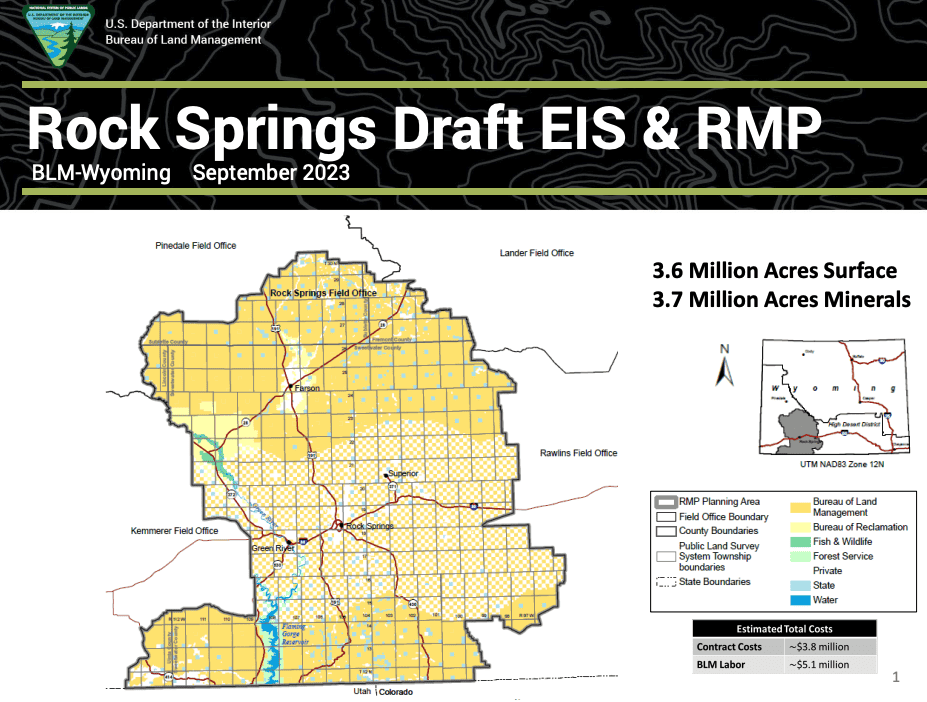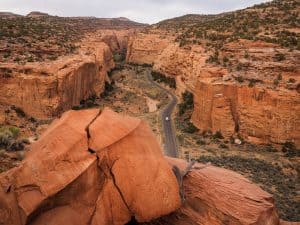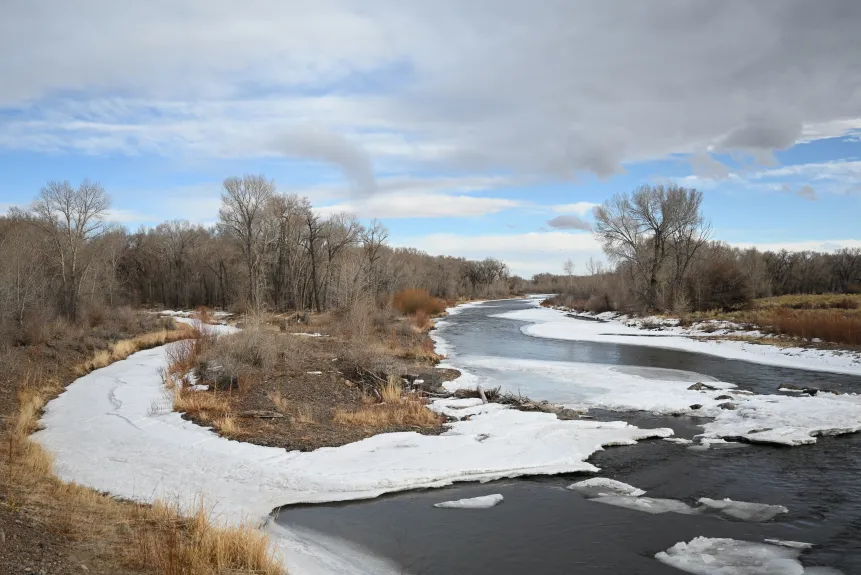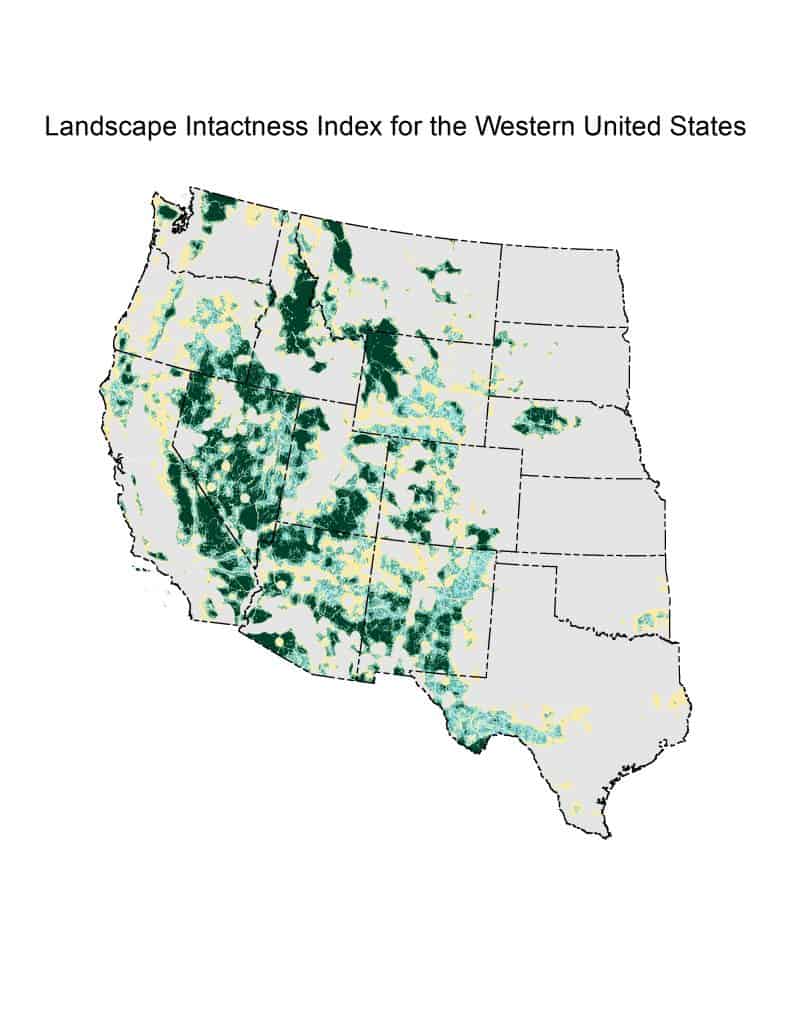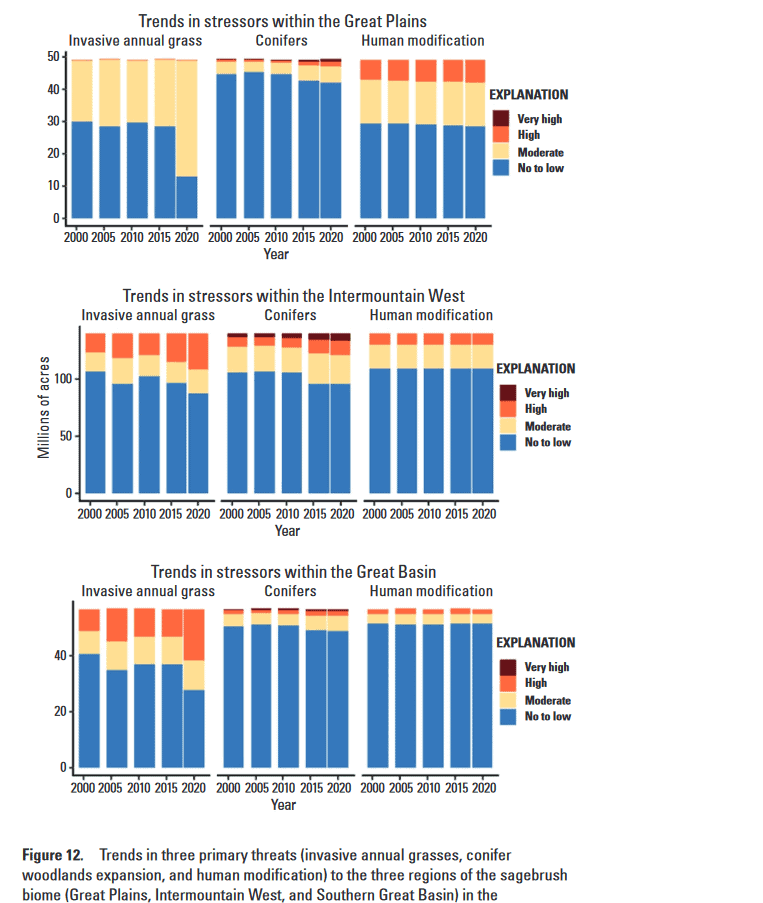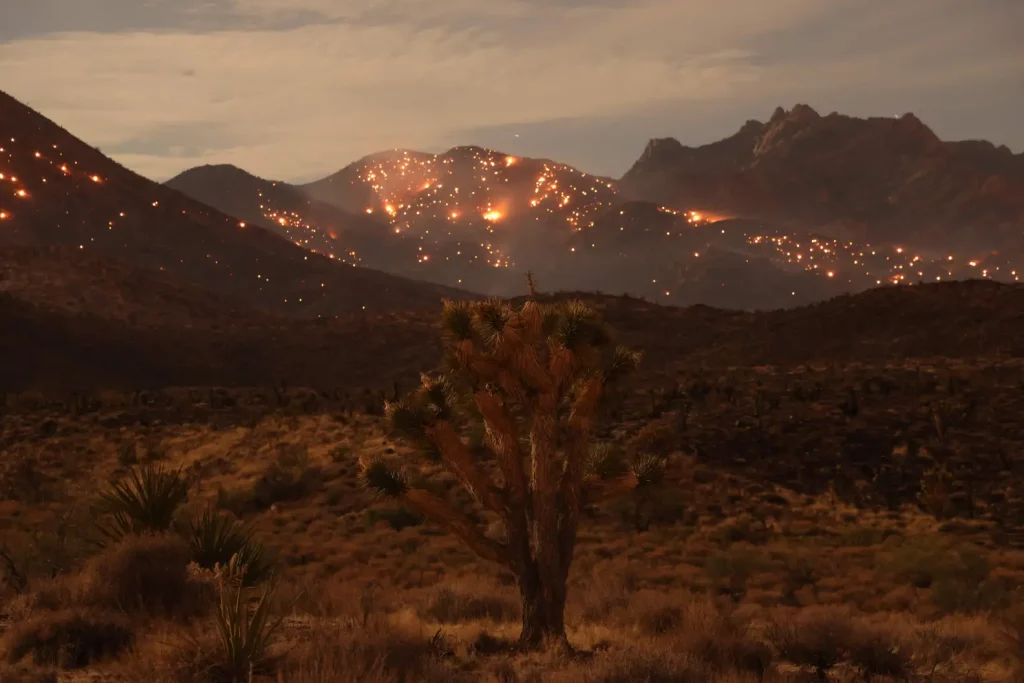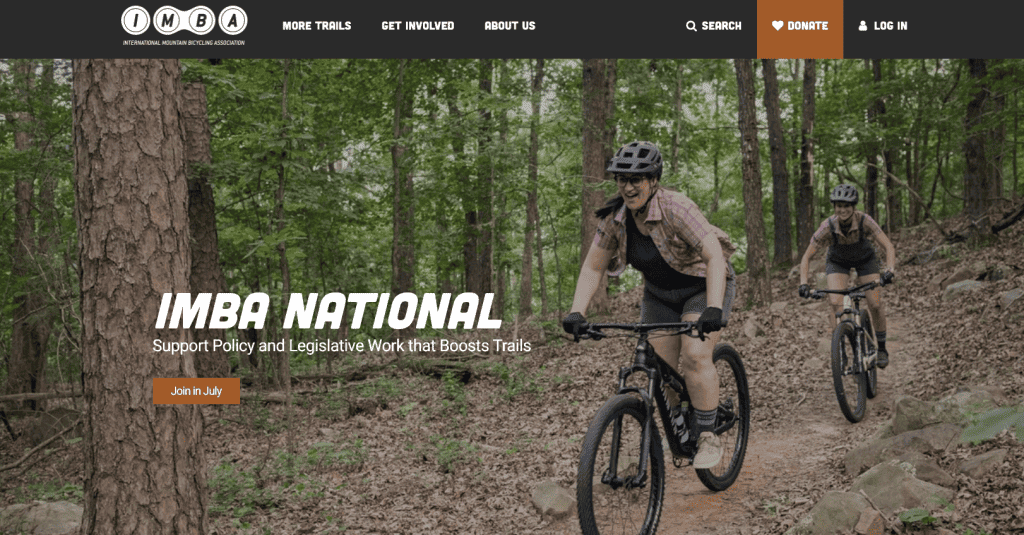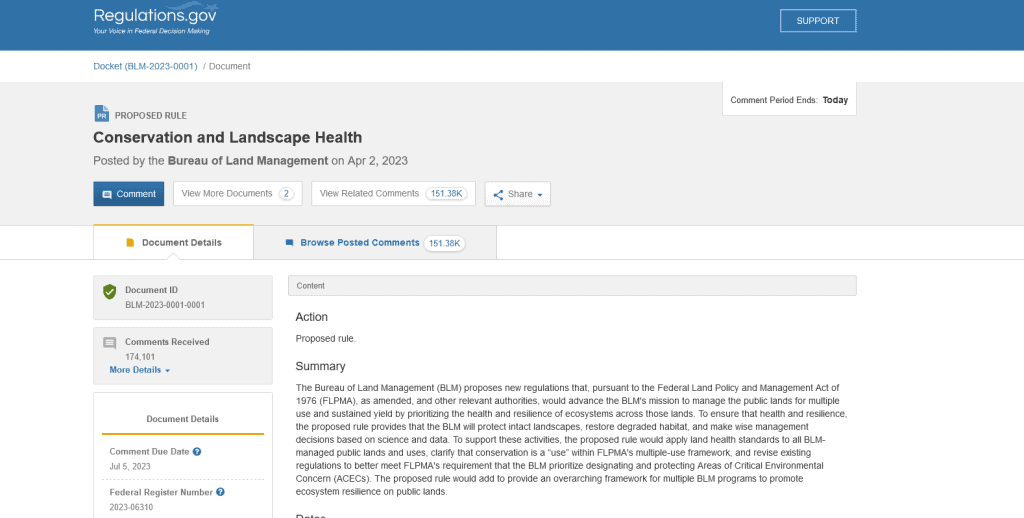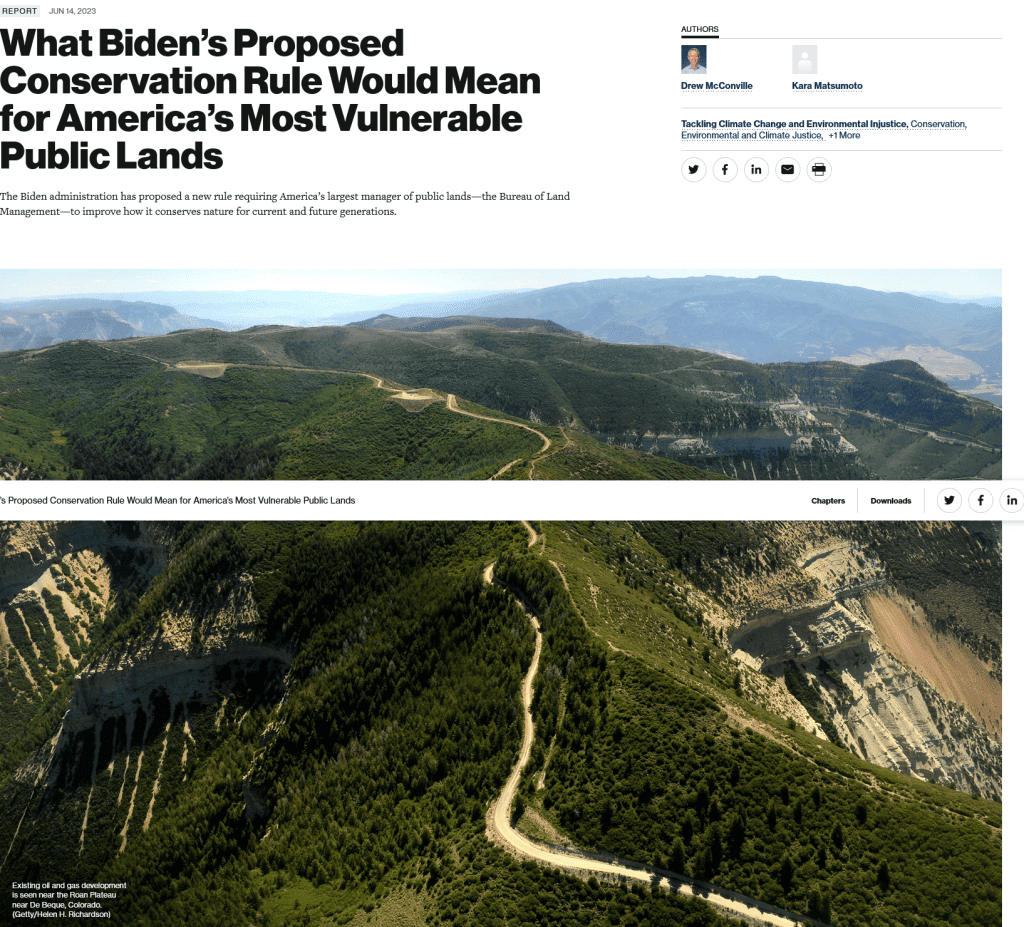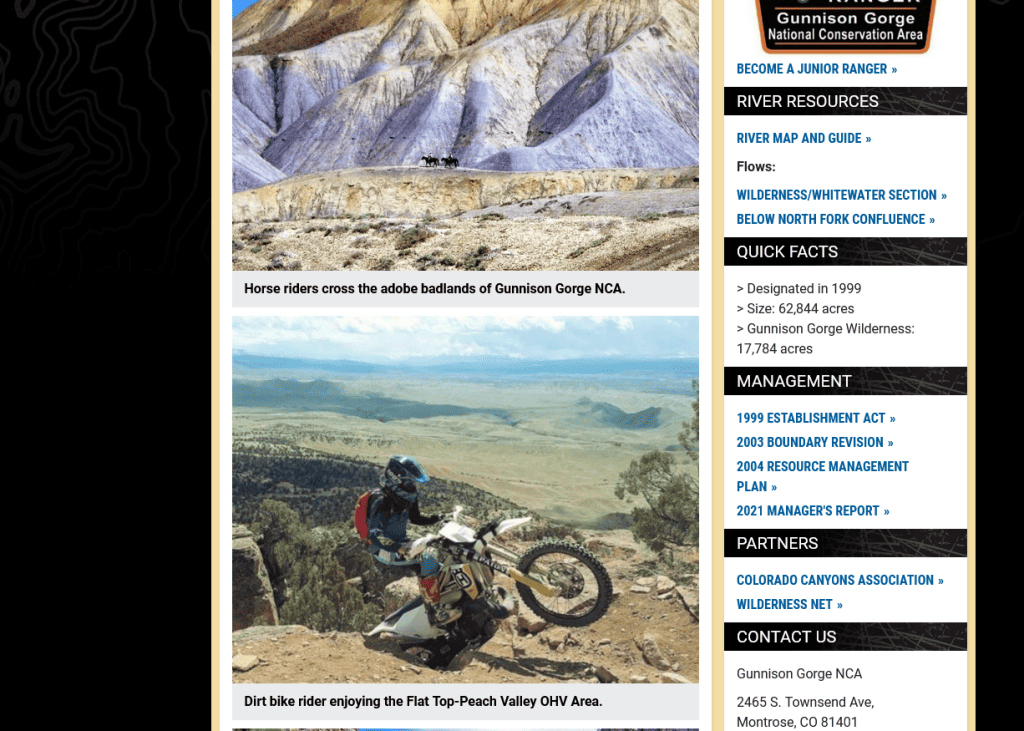
A few quotes and reflections about Monuments. In some sense, they seem more about politicians getting credit from supportive groups, rather than good things happening on the ground. And those experienced with BLM processes please correct me if I’ve gotten some things wrong.
**************
First of all, there’s kind of a philosophical question about “protection.” If there are the many wondrous things talked about, say, in a Monument proclamation, then existing laws and regulations must have already protected them, so no biggy, really. To protect archeological sites on far-ranging areas like 1.1 mill acres, you probably need more law enforcement. The same groups that work so hard on Monuments (I’m talking big NGOs) could easily fund those kinds of collaborative efforts.
So if we go by the rhetoric, then there are unspecific future things that could be proposed, that we need to keep from happening before they are proposed, because we can’t trust existing statutes, regulations and processes to protect the environment. And the environment in this place is more important than elsewhere, for various reasons.
So what is this desire to Monumentize really about? For the Prez, it could just be politics as usual, rewarding friends with a frisson of punishing enemies (Utah is right next door to this one). But that’s not entirely it.
*********
I ran across an article in the Wall Street Journal about a rich person named Elaine Wynn in Las Vegas and the Basin and Range National Monument. This story is about Congress, but the principle’s the same..important ($) people want Monuments.
She has remade herself as a world-level art collector and a force in public art, supporting the Los Angeles County Museum of Art and using her influence to help create a national monument designation to protect land around Michael Heizer’s City—a 1.25-mile-long earthwork sculpture in Nevada. She has taken her work in Nevada education to the national level: She is chairman of Communities in Schools, which provides resources to disadvantaged children. It recently received a surprise $133 million gift from MacKenzie Scott, Jeff Bezos’s ex-wife.
***
Michael Govan, director of the Los Angeles County Museum of Art, says Wynn was a key figure in the 2015 creation of Basin and Range National Monument, which protects the 704,000 acres surrounding Heizer’s City. President Barack Obama approved the designation. “When [Elaine] started making calls to Congress,” Govan says, “somehow I was received in a different way.”
***********
Let’s also look at this op-ed from the Durango Herald by an outdoor businessperson from last Friday.
“There is a new community-led movement for the president to designate the Dolores River Canyon Country as a national monument, which would open new avenues for local economic growth, increase resources to thoughtfully manage these wildlands and deepen the quality of life in our community. We believe that a landscape-scale national monument would open the door to better management and conservation, and provide additional resources to land managers to accommodate for sustainable recreation and continued access.”
Hmm. “New avenues for local economic growth”- what does that mean exactly? More people coming to town? But the area is overcrowded already. And as we’ve seen with the San Gabriels, a Monument does not necessarily come with more funding attached. I don’t know about “deepening the quality of life” but in other parts of Colorado, more people does not actually deepen the quality of life. And again, the author says “provide additional resources to land managers.”
I see several problems with this thinking. 1. More growth and people is not necessarily better, not if it leads to housing problems, etc. 2. Monuments need Monument plans, which distracts managers from.. actually managing (and reopen disagreements, which doesn’t necessarily “deepen the quality of life” at least not for the people involved). 3. Even if they did get additional resources, would the new number of bodies outstrip the new resources? and 4. Even if they did get more resources, as new Monuments pop up everywhere, they will be competing with each other and who is to say that a Dolores River Monument would beat out Chimney Rock, Brown’s Canyon, or Canyon of the Ancients, or Bears’ Ears or ..
Another interesting part of the op-ed is this..
Senators Michael Bennet and John Hickenlooper are leading the way to protect the Dolores River Canyon County, and have introduced legislation to designate a National Conservation Area to protect nearly 68,000 acres of the river corridor through Ponderosa Gorge. We are very supportive of this legislation and urge the senators to do anything they can to ensure it becomes law. However, the legislation does not encompass the entirety of the watershed, and politics in Congress are so uncertain that there may not be a viable path for the bill to become law.
If you take a look at the bill, it tends to have the same feel as a Monument; it is in fact very detailed about what’s in and what’s out. It has a FACA committee to be established within 180 days.. good luck with that! It’s got motorized travel only on existing routes, no new temp or permanent roads except for public health and safety, yes to grazing, but withdrawals from future minerals (401b). Uranium crops up again..
(1) IN GENERAL.—Nothing in this title affects valid leases or lease tracts existing on the date of enactment of this Act issued under the uranium leasing program of the Department of Energy within the boundaries of the Conservation Area.
UPDATE: BASED ON CORRECTION FROM TSW READERS
So there are National Conservation Areas. Congress gets NCAs, the Prez gets Monuments. One can imagine if political friends of an Admin want this kind of thing, it’s much easier to get.. just a stroke of a pen (OK, so obviously they do talk to some people in advance). But of course, as with NCA’s, first they make the decision about what’s in and out, and then have public comment and an EIS on any decision space left. Which kind of leaves the impression.. yes, NEPA is superimportant, as is public involvement, including marginalized communities.. but not for really important decisions.
It seems like an advantage of Monuments that they can do some Service-First-y things with the FS; whereas I don’t know how they handle FS land in and around NCAs.
But anyway, for now, just for the BLM, we have a variety of conservation designations – Monuments, ACECs, NCAs, Wilderness, and WSAs. Perhaps other citizens find this to be needlessly confusing? And there’s more encouragement of ACECs in the proposed BLM public lands rule.
If I were elected President (a candidate of the Good Governance Party), I’d ask the Secretaries to make a table of all the existing protected area designations on the Forest Service and BLM. The table would include what activities are allowed and which not, with maps. For each specific area, I’d ask how much funding went to work within those areas. Then I think Admins and Congress would have a better picture of the whole array of land restrictions, and where the bucks actually get to the ground. I’d also think that some of these designations could be fitted into simplified bands across the FS and BLM as to what activities are in and out, to increase public understanding of, and perhaps make it easier to enforce, the rules designed to protect from impacts.
